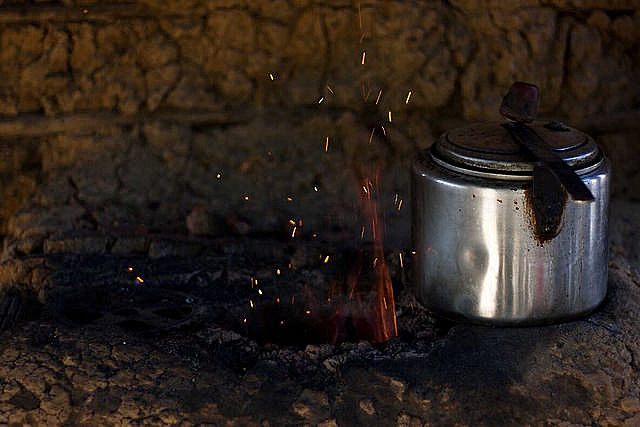People’s movements, unions, and civil society entities will tour around Brazil to describe an alarming scenario: as the number of people starving grows, hunger is rising to haunt the country once again.
The initiative to organize a caravan to investigate the rising number of people who are suffering from hunger in Brazil was developed by the Brazilian Semiarid Articulation (ASA) and will start in Caetés, Pernambuco, on July 27th.
The caravan will gather testimonials to paint a picture of this process, which goes against the commitments the country has made with the United Nations – including to food security, one of the goals of the 2030 Agenda, and to reduce hunger and poverty, one of the Millennium Development Goals that Brazil achieved in 2015.
This year, the Brazilian government, once again, will not present a follow-up report on the 2030 sustainable development goals, as countries can choose not to release data on these metrics.
But the work group, comprised of civil society organizations, that is investigating the fulfillment of these goals will release a new report by the end of July.
According to researcher Francisco Menezes, a member of the ActionAid and the Brazilian Institute of Social and Economic Analysis (IBASE), the report should show that a trend found in 2017 is likely growing: the country may be returning to the UN Hunger Map soon.
Brazil was removed from the Hunger Map in 2014, after the latest Brazilian Food Insecurity Scale survey was released. The study, published every five years, showed that approximately 3.2 percent of the Brazilian population – about 3 million households – experienced severe food insecurity in 2013. It was the lowest rate ever in the country’s history, a 28.8-percent drop over 2009, when 5 percent of the Brazilian people struggled with hunger.
The next research is expected to be released in December, but Menezes says there is evidence that the country’s situation has deteriorated and is moving away from the goals agreed upon with international organizations.
Unemployment
Menezes explains that cuts in social programs, the adoption of neoliberal policies, and especially unemployment and increasing job insecurity have contributed to this scenario.
The last three years have seen a reversion in the previous poverty reduction trend the country had been experiencing in recent years. In 2017, the number of extreme poor people reached the same levels as 2005.
“Extreme poverty is increasing at an extremely fast rate. And, over the last three years, we’ve gone back eight years in time in the number of people below poverty line,” he said.
The organizations use data from the Brazilian Institute of Geography and Statistics (IBGE).
“Looking into people in poverty and extreme poverty, we see that the country’s unemployment rates, which are already very high, are even higher for this demographic,” the researcher says.
“There is a strong correlation between extreme poverty and hunger. That means that those who are in extreme poverty are usually suffering from hunger. So when we have a situation that is similar to 12 years ago, considering 2017 data on extreme poverty, it all leads us to believe that a huge number of people are back in this situation of severe food insecurity, because they can’t afford to buy food.”
Indicators
Nutritionist Patrícia Jaime, a professor at the Public Health School of the University of São Paulo, points out that Brazil’s removal from the Hunger Map was also related to a process that strengthened the country’s public health system (SUS) and the reduction of child mortality.
But after 13 years of consecutive drops in child mortality rates among children under one year of age, this number increased 11 percent in 2017 over 2016. The number of undernourished children under 5 years old in Brazil increased from 12.6 percent to 13.1 percent in the same period. According to Jaime, this raises a red flag.
“When we were talking about the millennium development goals agenda, we were still talking about mortality and hunger, and it looked like we were going to further improve that perspective, toward food quality and safe, healthy, sustainable food, promoting agroecology-based family farming. That is, a more forward-looking agenda. And the inflection of [social] programs put basic structural matters at risk in terms of access and availability of food and income,” Jaime argues.
Naidison Baptista, an ASA coordinator in Bahia state, highlights the disincentive to family farming and State policies such as the Food Acquisition Program. The government, he explains, is not paying social organizations to provide food security-related services anymore, so there is a huge deficit in this sense. Not only that, the Michel Temer administration is no longer promoting technical assistance to small farmers, “so families are not being supported in the process of food production and income generation,” Baptista says.
According to Baptista, the caravan around the country, which is organized by ASA and other People’s Brazil Front organizations, is a process for social mobilization to point out potential solutions for these problems.
“The interesting thing about this caravan process is that it’s being spearheaded by small farmers. In Feira de Santana [Bahia state], for example, farmers will offer their own products to caravan participants when they visit the town. The university is willing to offer their auditorium for a demonstration. So we are building this together with several social actors,” the ASA representative says.
The caravan is planning to tour in the states of Pernambuco, Bahia, Minas Gerais, Rio de Janeiro, São Paulo, and Paraná.




